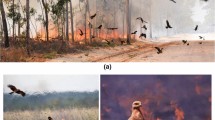Abstract
Optimum design of structures under time-variable loadings is a difficult task. Time-dependent behavior of constraints and cost of gradients calculations could be mentioned when applying time history loadings in the optimization problems. To overcome these difficulties, the response spectra as a seismic demand are used instead of using time history acceleration in the structural modeling. In this paper, the P-Delta effects are considered in the finite-element modeling of the frames. Furthermore, many practical constraints are included in the optimization formulation according to the Iranian national building code (Standard N. 2800). The developed MATLAB-based computer program is utilized for optimization of the low, intermediate- and relatively high-rise braced and un-braced steel frames. The obtained results of sequential quadratic programing (SQP) method are compared with the results of genetic algorithm (GA) technique for guarantying the global optimal designs. Because of the inexpensive costs of SQP method in comparison with genetic algorithm technique, SQP method could be confidently applied for obtaining the global optimum designs of the steel frames.














Similar content being viewed by others
References
Gülay G, Boduroğlu H (1989) An algorithm for the optimum design of braced and unbraced steel frames under earthquake loading. Earthquake Eng Struct Dynam 18(1):121–128
Erbatur F, Al-Hussainy M (1992) Optimum design of frames. Comput Struct 45(5):887–891
Thevendran V, Das Gupta NC, Tan GH (1992) Minimum weight design of multi-bay multi-storey steel frames. Comput Struct 43(3):495–503
Dixon AS O’Brien EJ (1994) Optimal plastic design of steel frames for multiple loading. In: Advances in structural engineering computing international conference on computational structures technology, pp 21–26
Hernández S (1998) Optimum design of steel structures. J Constr Steel Res 46(1):374–378
Memari AM, Madhkhan M (1999) Optimal design of steel frames subject to gravity and seismic codes’ prescribed lateral forces. Struct Optim 18(1):56–66
Akbari J, Sadoughi A (2013) Shape optimization of structures under earthquake loading. Struct Multidiscip Optim 47(6):855–866
Grierson DE, Chan CM (1993) An optimality criteria design method for tall steel buildings. Adv Eng Softw 16(2):119–125
Moharrami H, Alavinasab SA (2006) An optimization procedure for automated design of seismic-resistant steel frames. Int J Civil Eng 4:86–105
Jingui L, Yunliang D, Bin W, Shide X (1996) An improved strategy for GAs in structural optimization. Comput Struct 61(6):1185–1191
Yang J, Soh CK (1997) Structural optimization by genetic algorithms with tournament selection. J Comput Civil Eng 11(3):195–200
Kameshki ES, Saka MP (2001) Optimum design of nonlinear steel frames with semi-rigid connections using genetic algorithms. Comput Struct 79(17):95–105
Pezeshk S, Camp CV, Chen D (2000) Design of nonlinear framed structures using genetic optimization. J Struct Eng 126(3):382–388
Papadrakakis M, Lagaros ND, Plevris V (2001) Optimum design of space frames under seismic loading. Int J Struct Stab Dyn 1(01):105–123
Kameshki ES, Saka MP (2000) A genetic algorithm based optimum bracing design of non-sway tall steel frames. In: International conference on engineering computational technology, pp 111–119
De Castro LCLB, Partridge PW (2006) Minimum weight design of framed structures using a genetic algorithm considering dynamic analysis. Lat Am J Solids Struct 3(2):107–123
Salajegheh E, Gholizadeh S, Khatibinia M (2008) Optimal design of structures for earthquake loads by a hybrid RBF-BPSO method. Earthq Eng Eng Vib 7(1):13–24
Gholizadeh S, Salajegheh E (2009) Optimal design of structures subjected to time history loading by swarm intelligence and an advanced meta model. Comput Methods Appl Mech Eng 198(37):2936–2949
Gero MBP, García AB, del Coz Díaz JJ (2006) Design optimization of 3D steel structures: genetic algorithms vs. classical techniques. J Constr Steel Res 62(12):1303–1309
Keii M, Ikago K (2008) A trial design of steel frame office building based on an optimum design method. In: The 14th world conference on earthquake engineering, 12–17 October, Beijing, China
Chen Y, Hu K (2008) Optimal design of steel portal frames based on genetic algorithms. Front Archit Civ Eng China 2(4):318–322
Kripakaran P, Hall B, Gupta A (2011) A genetic algorithm for design of moment-resisting steel frames. Struct Multidisc Optim 44(4):559–574
Balogh T, Vigh LG (2012) Genetic algorithm based optimization of regular steel building structures subjected to seismic effects. In: Proceedings 15th world conference on earthquake engineering, pp 1–10
INBCSS “Iranian National Building Code for Steel Structures” (2009) Part 10. Ministry of Housing and Urban Development, Tehran, Iran
No S (2005) 2800-05 Iranian code of practice for seismic resistant design of buildings. Third Revision, Building and Housing Research Center, Tehran, Iran
Foley CM, Pezeshk S, Alimoradi A (2007) Probabilistic performance-based optimal design of steel moment frames I: formulation. J Struct Eng 133(6):757–766
Liu M, Burns SA, Wen YK (2005) Multiobjective optimization for performance—based design of steel moment frame structures. Earthq Eng Struct Dyn 34(3):289–306
Kaveh A, Kalateh-Ahani M, Fahimi-Farzam M (2014) Life-cycle cost optimization of steel moment-frame structures: performance-based seismic design approach. Earthq Struct 7(3):271–294
Stylianou MC (2011) S-FRAME R10. SOFTEK Services Ltd, Canada
Computer and Structures, Inc, (2011) Computers and Structures, Inc. official website. Official website summary. Computers and Structures, Inc. Retrieved December 4, 2011
Chen WF, Lui EM (1991) Stability design of steel frames. CRC Press, Boca Raton
Chopra AK (2001) Dynamics of structures: theory and applications to earthquake engineering, 2nd edn. Prentice Hall, Englewood Cliffs
Arora JS (2004) Introduction to optimum design, 2nd edn. Elsevier, San Diego
MATLAB and Optimization Toolbox Release (2012) The MathWorks, Inc., Natick
De Boor C (2001) A practical guide to splines, vol 27. Springer, New York, p 325
Author information
Authors and Affiliations
Corresponding author
Rights and permissions
About this article
Cite this article
Akbari, J., Ayubirad, M.S. Seismic Optimum Design of Steel Structures Using Gradient-Based and Genetic Algorithm Methods. Int J Civ Eng 15, 135–148 (2017). https://doi.org/10.1007/s40999-016-0088-0
Received:
Revised:
Accepted:
Published:
Issue Date:
DOI: https://doi.org/10.1007/s40999-016-0088-0




